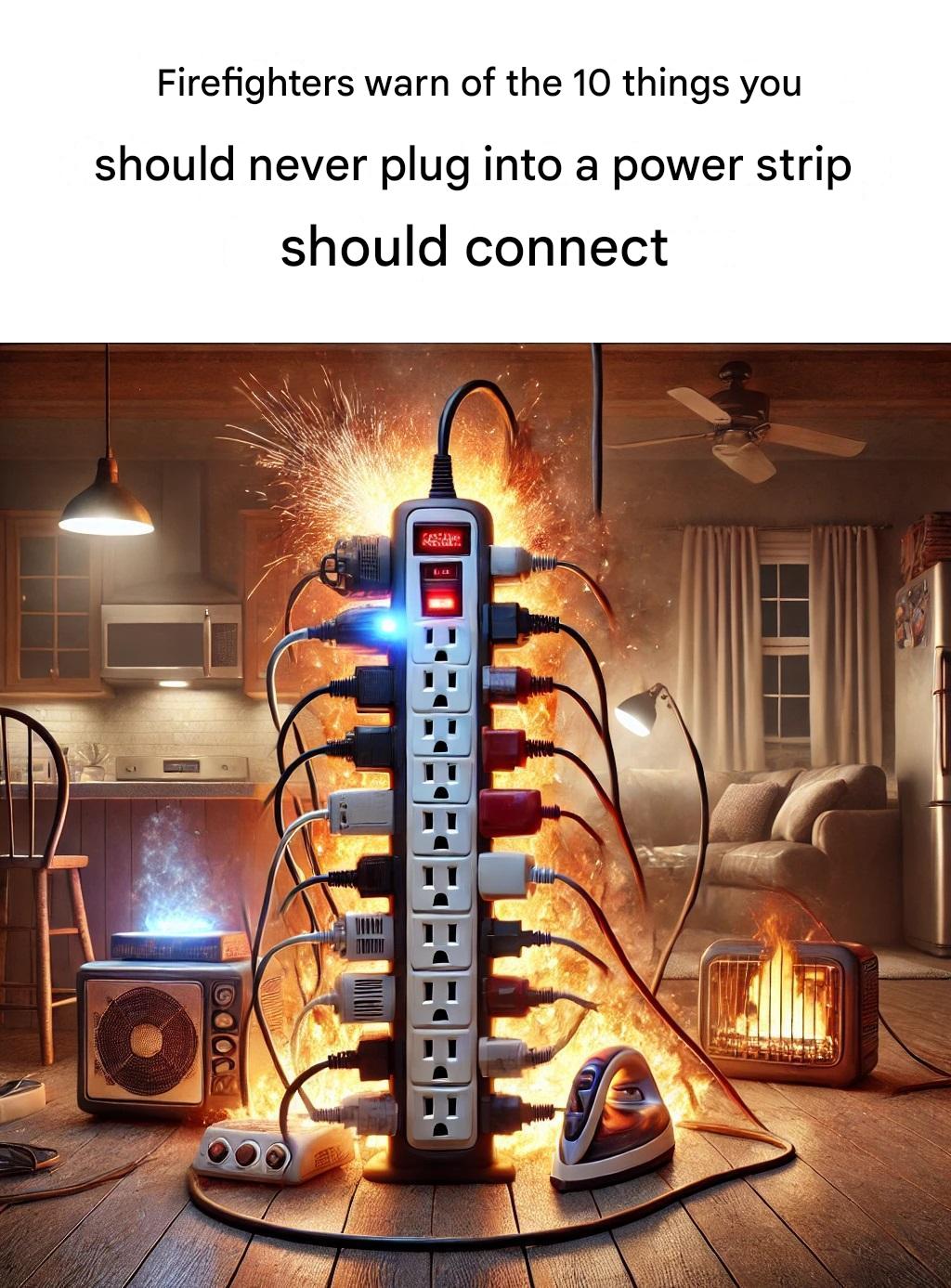Power strips are a common household item and offer a convenient way to increase the number of available outlets in a room. However, their misuse can lead to dangerous situations, including electrical fires. Firefighters and safety experts emphasize the importance of knowing what should and should not be plugged into a power strip to prevent accidents and ensure the safety of your home.
Understanding the Risks of Power Strip Overloading
Power strip overloading is one of the most common causes of electrical fires. Every power strip has a maximum power rating, and exceeding this limit can lead to overheating and potential ignition. It’s important to know the wattage and amperage ratings of both the power strip and the devices you plan to plug into it.
The Importance of Following Manufacturer Guidelines
Manufacturers provide specific guidelines and instructions for the safe use of power strips. These include maximum power ratings, suitable environments for use, and warnings about specific types of devices. Ignoring these guidelines can lead to dangerous situations, including electrical fires and device damage.
Common misconceptions about using power strips:
Many people believe that power strips can power any device as long as there’s an available outlet. This misconception can lead to overloading and overheating. It’s important to understand that power strips are not designed for high-power or high-drainage appliances.
The Dangers of Connecting High-Power Appliances:
High-power appliances such as microwaves and space heaters consume a significant amount of electricity. When plugged into a power strip, the strip’s capacity can quickly be exceeded, leading to overheating and a potential fire hazard. These appliances should always be plugged directly into a wall outlet.
Why space heaters should never be plugged into power strips.
Space heaters, including radiant heaters and electric blankets, are known to consume large amounts of electricity. Plugging them into a power strip can cause the strip to overheat and potentially catch fire. For safety reasons, always plug space heaters directly into a wall outlet.
The Risks of Using Power Strips for Kitchen Appliances:
Kitchen appliances like toasters, coffee makers, and blenders often require more power than a standard power strip can handle. Using a power strip for these appliances can lead to overloading and overheating. It’s safer to use wall outlets for these power-intensive appliances.
Understanding the Dangers of Plugging in Refrigerators and Freezers
Refrigerators and freezers are designed for continuous operation and consume a lot of electricity. Plugging these appliances into a power strip can cause the strip to overheat and fail, potentially leading to food spoilage and a fire hazard. These appliances should always be plugged directly into a designated wall outlet.
The Problem with Connecting Air Conditioners:
Air conditioners, especially portable units, require a significant amount of power to operate. Using a power strip with an air conditioner can easily exceed the strip’s capacity, leading to overheating and potential fire hazards. It’s best to use a dedicated wall outlet for air conditioners.
Why power tools should be avoided on power strips
